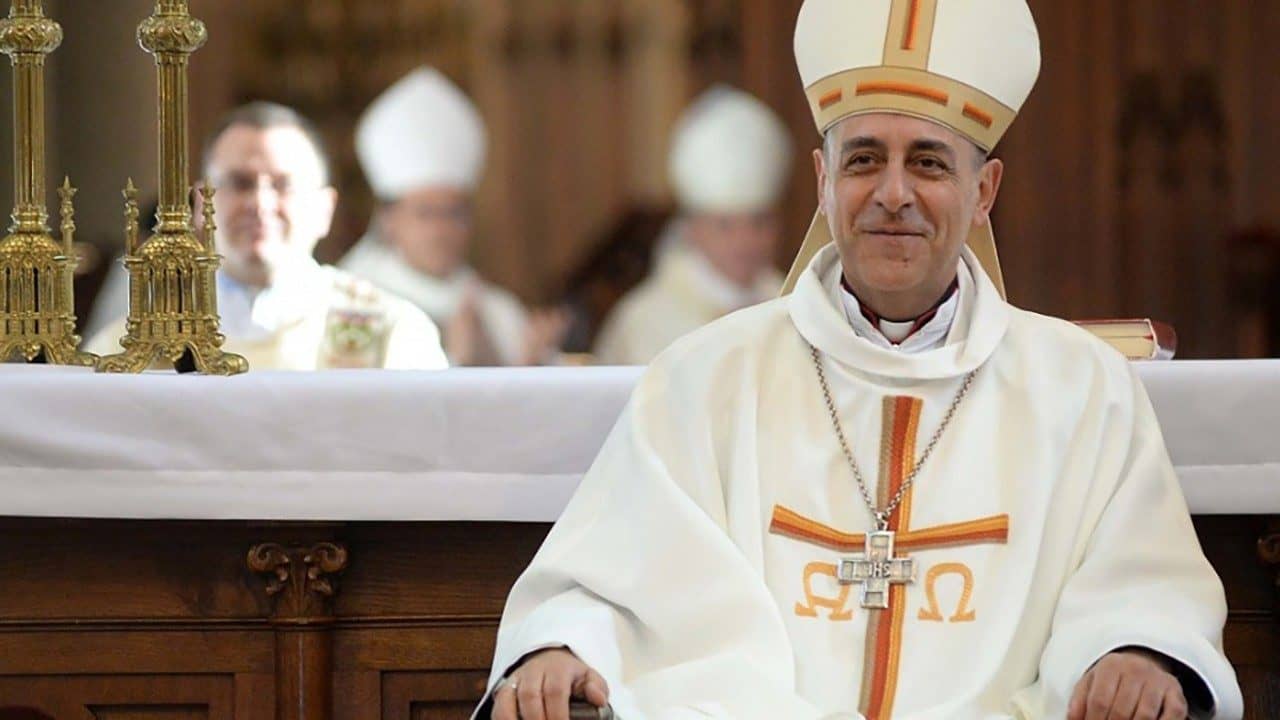ROME – In itself, Friday’s announcement that Archbishop Salvatore Cordileone formally has barred House Speaker Nancy Pelosi from receiving communion over her support for abortion rights probably shouldn’t be surprising, and it also may not be very consequential, at least in the short term.
After all, Cordileone has sparred publicly with Pelosi over abortion rights for some time – at one point promoting a “Rose and Rosary for Nancy” campaign to attempt to persuade the 82-year-old to change her stance – and he’s also made his position on access to communion for pro-choice politicians clear. In that sense, Friday’s ban represents the logical climax of a long-running drama.
Moreover, the ban in San Francisco may not even affect Pelosi’s ability to receive communion very much, given that she spends most of her time in Washington, D.C., where Cardinal Wilton Gregory has signaled that he prefers a more dialogical approach to the abortion dispute.
Unless a large contingent of other bishops impose similar bans in their dioceses, almost everywhere Pelosi may go, good advance work probably will be able to identify a sympathetic pastor willing to administer communion should she want to attend Mass.
Nevertheless, there are three aspects of the Cordileone/Pelosi story worth unpacking, for what they reveal both about the Catholic Church and the political temper of the times.
First, in one sense Cordileone’s act is an echo of the past, in that disputes over communion bans reach back at least to the Bush/Kerry race in 2004. Ever since, what wags have dubbed the “wafer wars” have been a source of contention in American Catholic life, tending to resurface whenever the Democrats nominate a Catholic who’s also pro-choice.
Yet in light of the pending Supreme Court decision overturning Roe v. Wade, assuming it’s confirmed, we may be entering a new era. One key effect of that decision would be to expand the battleground over abortion to the state level, thereby putting new pressure on bishops to make difficult decisions who, heretofore, have stayed on the sidelines.
Up to this point, unless you were the bishop of San Francisco, Washington, D.C., or Wilmington, Delaware (President Joe Biden’s home diocese), an American prelate on the fence about communion bans might reasonably claim it wasn’t his problem. Now, however, as an increasing share of decisions on abortion policy may be made by governors and state legislators, it may become more difficult for bishops around the country to ride out the storm.
In other words, even if Cordileone’s ban on Pelosi has roots in the past, it may also point to a new and more contentious future. Remember Faulkner – “The past is never dead. It’s not even past.”
Second, in the 18 years since the first flare-up of the communion ban issue in 2004, it’s become steadily more clear that Rome is unlikely to bail the bishops out by resolving the debate itself.
Under Benedict XVI, the Catholic Church had eight years of a papacy that clearly leaned more towards discipline and doctrinal clarity when it comes to the conditions for receiving communion. It was then-Cardinal Joseph Ratzinger, after all, who wrote the famous letter to the U.S. bishops in 2004 that’s been cited ever since by those in favor of denying the Eucharist to politicians who support abortion rights.
Now under Francis, the church has had eight years of a papacy that leans in the opposite direction, towards tolerance and pastoral flexibility. When asked for his view on communion bans during an in-flight news conference in 2021, Francis called on bishops to act as pastors rather than politicians, and the pope’s ambassador to the U.S. warned the bishops against treating communion as “something to be offered to the privileged few” ahead of their vote on a new document on the Eucharist in fall 2021.
Yet neither Benedict XVI nor Francis has imposed a uniform position on the question, insisting that the determination of an individual’s worthiness for communion belongs to the local pastor. (Of course, both popes have influenced the debate by the sort of bishops they named – Cordileone, for instance, was appointed to San Francisco by Benedict XVI – but that’s a different matter.)
In political terms, the bottom line is that while both proponents and opponents of communion bans can find plenty of papal material to support their positions, the bishops are on their own in terms of making the final call.
A fortiori, the U.S. bishops’ conference isn’t going to resolve the issue by taking a corporate stance. For one thing, an episcopal conference cannot override the judgment of an individual bishop, and anyway, American prelates are too divided on the issue to arrive at a consensus solution.
Third and finally, the fact that a figure such as Pelosi could be denied communion in one setting but welcomed in another points to a deep truth about the Catholic Church, which is that despite public mythology of being hyper-centralized and rigidly controlled, in truth Catholicism is actually one of the most decentralized institutions on earth, with most of the decisions that really matter being made on the local level.
It’s understandably jarring to some people, including many Catholics, that the church could tolerate such internal diversity, especially on an issue with obvious implications for core matters of Catholic teaching. Yet in the terms of religious sociology, that’s precisely what makes it a church rather than a sect.
To paraphrase Whitman, the Catholic Church is vast, and it contains multitudes.
The trick for Catholicism, therefore, always is to find pathways to unity despite its riotous diversity. In America today, especially facing the looming Supreme Court ruling, that perennial challenge may reach a whole new level of intensity.















